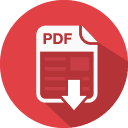2023 Assessment of the Effectiveness of Internal Financial Controls
II. INTENT:
- The intent of the Fulton County Industrial Development Agency’s (IDA) system of internal control shall be to:
- Promote effective and efficient operations so as to help the IDA carry out its mission.
- Provide reasonable assurance that the IDA’s assets are safeguarded against inappropriate or unauthorized use.
- Promote the accuracy and reliability of accounting data and financial reporting to ensure transactions are executed in accordance with the IDA’ Board’s authorization and recorded properly in accounting records.
- Encourage adherence to the IDA Board’s policies and procedures for conducting programs and operations.
- Ensure compliance with applicable laws and regulations.
- This system of internal control includes performing an annual assessment to identify potential weaknesses in policies or procedures and to implement corrective actions.
- This assessment shall identify significant weaknesses in controls, recognize emerging or inherent risks, and to enable early detection of existing or potential problems. If an internal control system is working effectively, the IDA Board will have a reasonable indication of the reliability of its operating practices and the accuracy of the information it is using to measure its activities and performance. Any deficiencies identified as a result of the assessment shall be addressed by the IDA Board.
III. INTERNAL FINANCIAL CONTROL SYSTEM:
1. Summary:
- The Fulton County Industrial Development Agency utilizes an internal control system to preserve the assets of the organization.
- System procedures shall be reviewed annually by the independent auditors who will make recommendations to the Board of Directors for suggested changes.
- In addition, during the year, changes may be recommended by IDA’s management. However, such changes shall not be implemented until reviewed by independent auditors and approved by the IDA Board.
2. Cash Receipts:
- The Chief Financial Officer shall open the daily mail and make copies of the checks received and file same.
- The Chief Financial Officer shall prepare and make a bank deposit as needed.
- Upon completion of the deposit, the Chief Financial Officer shall enter the deposit in the appropriate Agency’s records.
- All bank accounts shall be reconciled monthly.
3. Cash Disbursements:
- All purchases shall be made according to the IDA’s Procurement Policy. The IDA’s Procurement Policy shall be reviewed annually by the IDA Board.
- All invoices received shall be reviewed by the Chief Financial Officer and verified for accuracy and completeness. The Chief Financial Officer shall then forward them to the Executive Director for review for completeness and accuracy.
- All invoices received that do not have prior authorization by the IDA Board shall be submitted to the IDA Board at their next regularly-scheduled meeting to get authorization to pay.
- All invoices received that IDA Board authorization has been given and once reviewed and approved by both the Chief Financial Officer and Executive Director, the Chief Financial Officer shall transfer the necessary funds and prepare a check for payment.
- All IDA checks shall have two (2) signatures. One shall be by the Chief Financial Officer. The second shall be by an authorized member of the IDA Board. In the absence of the Chief Financial Officer, the second signature can be by another member of the Audit Committee. The Executive Director shall not be an authorized signer.
- An authorized signer may not sign his/her check for reimbursement of approved travel, unless signed by a second IDA Board member.
4. Budget Reports:
- Budget Reports shall be prepared regularly by the Chief Financial Officer in a format approved by the Board of Directors.
- Budget Reports includes the following information:
- List of all IDA Accounts
- Current Year Budgeted Amount for each Account
- Year to Date Expenditures for each Account
- Balance in each Account
- Current Balances for all Investments
- All Budget Reports shall be reviewed by the Executive Director prior to presentation to the IDA Board.
- All investment of IDA funds shall be in accordance with investment policies. Investment activities shall be reported to the Board monthly. All investment decisions must have the Executive Director’s approval after review for compliance with current investment policies.
5. Quarterly Tax Returns:
- Quarterly Federal and State Tax Returns shall be signed by the IDA Treasurer or any member of the Audit Committee.
6. Bank Statement:
- The Chief Financial Officer shall provide at each IDA Board of Directors’ meeting a copy of the latest Bank Statement to verify the funds actually in the IDA’s bank account. (Added January 9, 2018.)
7. Monthly Bank Account Reconciliation Forms:
- The Chief Financial Officer shall provide, at each IDA Board of Directors’ meeting, Monthly Bank Account Reconciliation Forms for each IDA bank account that a member of the Audit Committee will review and, if found acceptable, sign.
- TREASURY BILLS:
- The IDA Board shall determine whether to invest funds into Treasury Bills.
- The CFO shall invest funds into Treasury Bills as directed by the IDA Board.
- The CFO shall provide monthly reports to the IDA Board regarding the status of all investments in Treasury Bills.
IV. IDA’S INTERNAL CONTROLS ASSESSMENT PLAN:
1. Define the IDA’s Primary Functions:
- Annually review the mission of the IDA and verify that its primary operating responsibilities, operations and functions that will help fulfill its mission.
- Annually evaluate the IDA’s written mission statement to ensure that it clearly defines the IDA’s purpose.
- Define IDA’s objectives and ensure they are understood by IDA staff.
- Review policies, procedures and guidelines to ensure that they guide IDA staff in the operations of the IDA and provide methods and procedures to assess the effectiveness of those functions.
2. Determine Risks:
- Assess the internal and external risk exposure and associated vulnerability of each function of the IDA and assign a corresponding risk level (i.e. high, medium, or low).
- If a risk is identified, the IDA Board shall determine how to best handle it by evaluating its significance, likelihood, and cause.
- Based on the assigned risk levels, the IDA Board shall determine how frequently to review the controls in place for each function.
3. Review Existing Internal Control Systems in Place:
- The IDA Board and staff shall annually review and be aware of the policies and practices in place to ensure that the IDA is effective and to address the risks that are relevant to the operation.
4. Assess the Extent to Which the Internal Control System is Effective:
- The assessment of internal controls should be a structured and monitored process to identify and report any weaknesses of the internal control structure to the IDA Board.
- This process should determine if the existing control structure and procedures are adequate, to then mitigate risk, minimize ineffectiveness and deter opportunities that could lead to the abuse of assets.
- The assessment should provide the IDA Board with information as to whether the IDA’s policies and operating practices were understood and executed properly, and whether they are adequate to protect the organization from waste, abuse, misconduct, or inefficiency.
- This assessment shall be completed through a combination of inquiry and observation, a review of documents and records and by replicating transactions to test the sufficiency of the control system.
5. Take Corrective Action:
- When a weakness is identified, a corrective action plan should be developed, adopted by the IDA Board and then monitored by the IDA Board to ensure that the vulnerability is addressed.
V. INTERNAL CONTROL CERTIFICATION:
1. Section 2800(2)(a)(8) of the Public Authorities Law:
- To satisfy the requirement of Section 2800(2)(a)(8) of Public Authorities Law, the IDA shall incorporate, either within its annual report or as a separate document, a statement explaining that the authority has conducted a formal, documented process to assess the effectiveness of their internal control structure and procedures, and indicating whether or not the internal controls are adequate.
- This statement should eventually be posted to the IDA’s website.
- The IDA shall retain documentation to support the assessment of its internal controls.
- If the IDA finds any deficiencies with the internal controls over its functions or operations, additional documentation should be maintained to demonstrate that the IDA has adopted corrective action plans to address these weaknesses.
- This documentation should be made available upon request to the IDA’s independent auditor or to ABO compliance review staff.
2. Public Authorities Reporting Information System (PARIS):
- As part of the PARIS Annual Report tab, the IDA will be required to indicate whether or not they have prepared this assessment and to provide the URL link to the statement, if available.
VI. IDA BOARD’S 2020 ASSESSMENT OF THE EFFECTIVENESS OF THE INTERNAL FINANCIAL CONTROL SYSTEM:
“The IDA Board has documented and assessed the internal control structure and procedures of the Fulton County Industrial Development Agency for the year ending December 31, 2022. The IDA Board determined that internal controls should be modified to include Treasury Bills.”
Approved by IDA Board of Directors on March 9, 2011.
Approved by IDA Board of Directors on March 23, 2012.
Approved by IDA Board of Directors on January 31, 2013.
Approved by IDA Board of Directors on January 14, 2014.
Approved by IDA Board of Directors on February 5, 2015.
Approved by IDA Board of Directors on January 6, 2016.
Approved by IDA Board of Directors on February 9, 2017.
Approved by IDA Board of Directors on January 9, 2018.
Approved by IDA Board of Directors on January 16, 2019.
Approved by IDA Board of Directors on January 14, 2020.
Approved by IDA Board of Directors on January 12, 2021.
Approved by IDA Board of Directors on January 11, 2022.
Approved by IDA Board of Directors on January 10, 2023.
Approved by IDA Board of Directors on January 9, 2024.
Approved by IDA Board of Directors on January 14, 2025.


